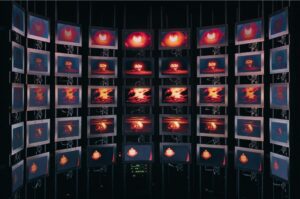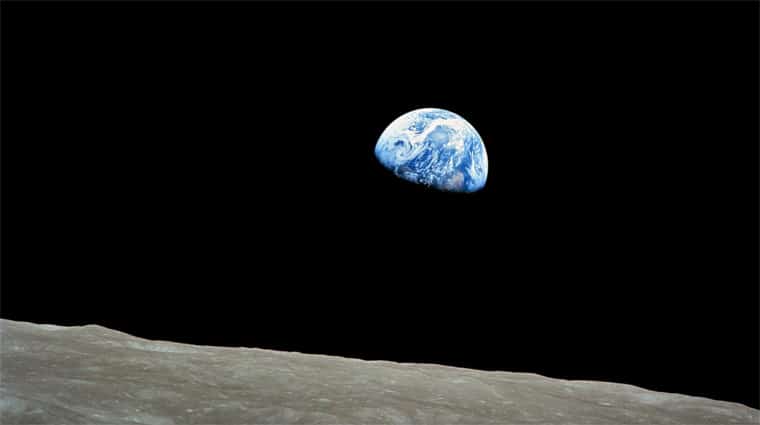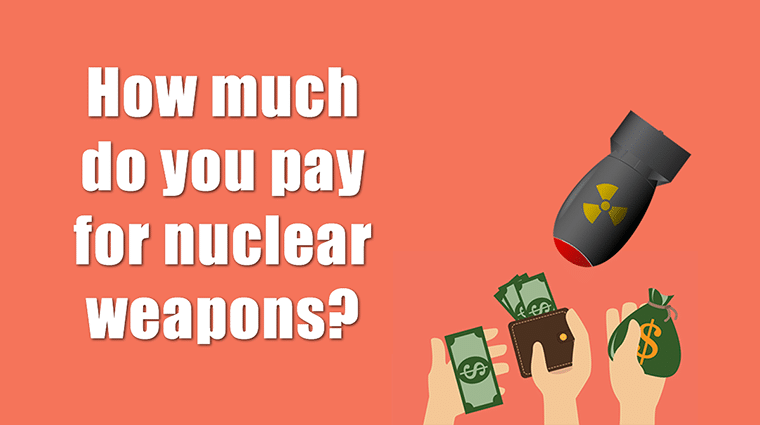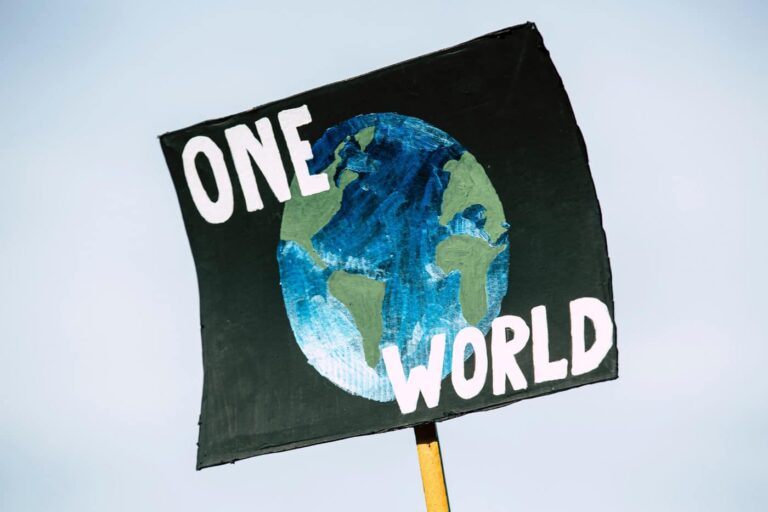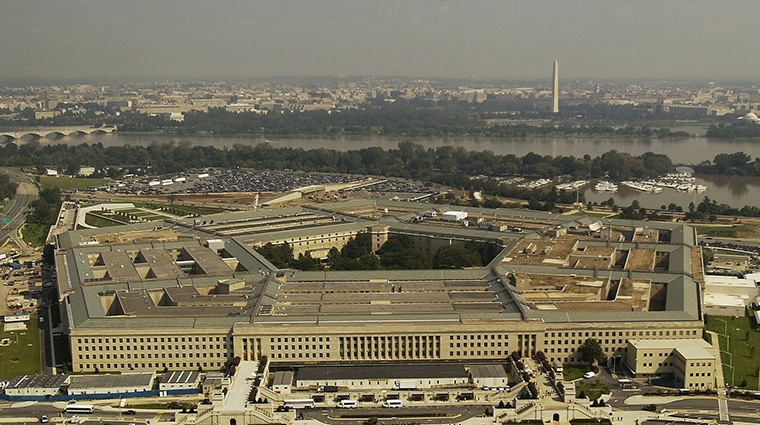Introduction
Dear Scott,
I hope the Free Range Studios’ New Media campaign is going well! I am really interested in the project so let me know if the Alliance for Nuclear Accountability or I can be useful during the planning process and/or after it launches. I think a new media strategy for the anti-nuclear power community could be useful and I am excited to share the eventual product. I enjoy online communications and I try to keep up with the field as best as I can through the Nonprofit Technology Network, Progressive Exchange, and a few local DC Tech groups. Depending on where you are in the planning process, I had a few rambling thoughts that I thought I would share on the off chance they are useful in your planning process.
I would recommend that
While I was at PSR in 2013, I had the opportunity to support Global Zero’s campaign that they launched with Free Range (and a number of other video / creative consultancies). I think they are talented and I am excited that you are working with them on this project. Free Range has worked on many successful and innovative video, web, and branding campaigns. One of their most recognized projects was the work they did (and continue to do) with Annie Leonard on “The Story of Stuff.” I know Annie is also advising on this project and that you are likely very familiar with the ins and outs of that campaign.
2007 was a remarkable year. Years of public education, rallies, and media work had raised concern over climate change and the environment to an apex. The year before, Al Gore transformed his successful lecture series into a movie, “An Inconvenient Truth” that would become one of the rare documentaries to receive mainstream distribution and success. From February – May 2007, U.S. internet queries for climate change and global warming reached a level that has yet to be surpassed. People were hungry for information about this crisis and they wanted to know what could be done to stop it in its tracks. In December, 2007, Annie Leonard and Free Range Studios released, “The Story of Stuff” to an audience that was primed for its powerful and creative message. With Annie’s compelling content and Free Range’s novel (at that time) video concept – her message reached millions.
The challenge for this project is that the conversation occurring online on nuclear power is limited and, largely, unhelpful. Here, for example, are a couple of popular threads on nuclear power from Reddit:
People are largely comparing nuclear energy to coal and natural gas because there is an absence of a well articulated, and creatively delivered, vision of what a clean energy economy looks like. Until people believe that renewable energy can handle U.S. energy needs, it will be incredibly difficult to make a persuasive case for people, especially younger generations who are strongly anti-coal power, to become activists/supporters in a fight against nuclear energy. As some environmentalists begin to make a “green” case for nuclear energy, it is particularly important for the anti-nuclear community to create a messaging frame that makes new support for nuclear energy unlikely.
If you do online searches for clean energy, renewables, and other associated search terms – you find vague articles and mediocre websites.
I had the opportunity to support Global Zero’s campaign in 2013 around a campaign they launched with Free Range (and a number of other video / creative consultancies). I thought the video was inspiring and, while at PSR, we used the video to support Global Zero’s petition drive and received a high response from our e-activists. We were happy with the results but we also had modest expectations – especially considering the campaign was not designed with our organization in mind.
Later, Free Range
I know that a few audiences and goals have been discussed at previous brainstorming meetings and it is possible that the group has already decided on what those should be for this project.
I think it will be tough to get a lot of mileage from a video focused on nuclear power. There is no doubt that Free Range Studios can create a creative and appealing message in a video that effectively represents concerns over nuclear power and the promise of a clean energy future. With the groups assembled in support of this project, simply e-mailing the video out to lists could generate tens of thousands of views from their respective membership lists. An effective video could help to engage some of those members and convert them into new activists or new donors.
When I was at PSR, I was impressed with one of the videos that Free Range Studios did for Global Zero and we decided to support their campaign by sending out the video / an ask to sign-on to the petition. We also worked with Global Solutions to send it out to their members. We had a positive reaction from PSR’s membership but the amount of forwards and the donation conversions did not increase significantly. With Global Solutions’ membership, who are like-minded but do not work on nuclear disarmament, we had a mediocre response compared with other campaigns we have done with them. The video itself is excellent and, personally, I found it inspiring. The video received ~84,000 views over the past year with, I imagine, many of those coming from Global Zero’s e-activist list (perhaps ~400,000?) and a much smaller amount being driven there by other organizations like PSR/Global Solutions. The number of shares that YouTube cites is a little under 300 but it’s possible that more people shared it in a way that isn’t captured by that statistic. The video did have a few celebrities who shared it on twitter but that could be a result of Global Zero’s pre-existing relationship with a number of celebrities.
Free Range Studios did a second video for Global Zero that spread far more widely. In this video, they actually featured celebrities making a call for nuclear disarmament. With people like Morgan Freeman, Matt Damon, and Michael Douglas – the video was tweeted by a large number of popular celebrities and was also sent out to Global Zero’s e-activists. Overall, ~240,000 have seen that video.
2007 was a remarkable year. Years of public education, rallies, and media work had raised concern over climate change and the environment to an apex. The year before, Al Gore transformed his successful lecture series into a movie, “An Inconvenient Truth” that would become one of the rare documentaries to receive mainstream distribution and success. From February – May 2007, U.S. internet queries for climate change and global warming reached a level that has yet to be surpassed. People were hungry for information about this crisis and they wanted to know what could be done to stop it in its tracks. In December, 2007, Annie Leonard and Free Range Studios released, “The Story of Stuff” to an audience that was ready for its powerful and creative message. The rest, as they say, was history.
Videos can gain success by capturing an existing market, creating a new market, or by deflating a competitor’s market.
Is there an existing market for a campaign video that opposes nuclear power?
The challenge for the anti-nuclear power community is that there isn’t a broader conversation occurring about nuclear power, c
lean energy, or climate change. All of the below Google Graphs are based on search traffic in the United States over the past 10 years.
nuclear
nuclear
climate change

When Pew polled the U.S. public last month, energy, environment, and global warming did not make it into the top 10 priorities and there is little evidence that interest in prioritizing energy is increasing.
That being said,
Breakdowns of polling on nuclear energy by age does not yield any evidence that younger generations are
Millenials are ambivalent about nuclear energy and the broader public continues to have mixed feelings about the its future. While there is widespread concern about the risks associated with nuclear energy, the public sees the tra and interest in climate change / energy policies have waned (Pew Public Priorities Polling & Google Search Trends). Climate change and global warming are searched approximately 80% less than they were in 2007.
Even with a primed audience, the creativity and quality of the content must be high for a video to break through the noise and win champions who will spread the word about a video. The skill of Annie Leonard and Free Range Studios made that possible with “The Story of Stuff”. While there are certainly videos that become popular despite a lack of public attention on the issue, they are rare and typically touch on issues that are emotional, relatable, and is credulous.
The problem with nuclear power is that the case against
In order for the video to break into the conversation, the content and delivery had to be remarkable. I remember the first time I watched “The Story of Stuff.” The story Annie Leonard was telling about my cell phone, laptop, and how it fit into a larger system made me rethink my personal purchasing habits. What made this video stand-out, however, was the creativity of the strategy. In a medium packed with special effects, the simplicity of the video drew me in and encouraged me to listen. While the audience was primed for this message, it took the collaboration of a talented creative studio and a passionate expert to create the type of content that could break through the noise.
Not all successful viral videos require a conversation to be happening in order to gain widespread appeal.
For this campaign to be effective, we should not be talking about nuclear energy. We have an opportunity to use this campaign to present an optimistic and scientifically-grounded vision for what a clean energy future looks like for the United States. What will defeat nuclear energy and fossil fuels, with far more certainty than attempting to build a committed opposition towards those energy sources, will be an economically viable renewable energy industry. If the campaign becomes a story about how nuclear power is dangerous and costly, we will have a far narrower group of champions who will share our campaign and we will be placing our side in an unenviable position; We will need to prove the negative proposition that innovations in technology can not make nuclear energy cheaper and safer in the future. Let us, instead, make clean energy synonymous with carbon-free, nuclear-free and force nuclear proponents to have to argue against the promise of a renewable energy future.
There is a significant need to educate the public, lawmakers, and other stakeholders about the real costs of nuclear energy. If the public knew what this community knows, the public’s ambivalence towards nuclear energy would swiftly change to opposition. That being said, our messaging strategy must be based on what ideas our community has that will sell. Out of the ideas explored with Free Range Studios, Story Map #4 offers a story that holds the possibility to speaking to the clear majority of Americans who support renewable energy, are wary of fossil fuels, and believe climate change is real. Story Maps #1, #2, #3, with Free Range Studio’s expert work, would make effective and compelling videos, however, they hold less chance of being seen outside the choir.
If you take a look at the communications landscape, we have an opportunity to fill in a serious gap in online content and media.
An online media campaign, with nuclear energy as the focus, places the campaign at a disadvantage
The more time we spend talking about the costs and risks of nuclear power, the more we handicap our own position. We place the nuclear industry in the enviable position of using Millenials’ and Gen-X’s confidence in technology to convince them that progress can be made towards making nuclear energy cheaper and safer. While there is robust argumentation developed by our community how that is not likely, attempting to prove a negative is not a strong position from which to broaden our base. We can bypass the public’s ambivalence about nuclear energy by making this campaign about renewable energy.
The more time that we talk about the costs and risks of nuclear power, the more we handicap our position. We place pro-nuclear interests into an advantageous position where all they have to do is convince the public to believe that progress in technology and science can make nuclear energy cheap and safe. Our side, on the other hand, has to somehow convince the public that nuclear energy can not become cheap and safe. While there is robust argumentation for how trends of increased R&D funds have not yielded cheaper reactors, attempting to prove a negative is not the strongest position to place our side on.
Ultimately, the anti-nuclear movement is not simply about turning nuclear power off. We want a carbon-free, nuclear-free future for the planet. While the public is ambivalent about nuclear energy, the popularity of renewable energy sources remains even as the importance of the environment and of energy issues has diminished since it’s peak during the mid-2000s. Nuclear energy’s support is the weakest when polls ask about its value in the context of a choice between our energy options. While economics will likely continue to stymie the nuclear industry’s attempt to manufacture a “nuclear renaissance”, there is an urgent need for environmentalists to make an effective and accessible case for what a carbon-free, nuclear-free future looks like for the U.S.
While people want to believe in that optimistic future, they are understandably skeptical that it is realistic. When Al Gore created the movie “An Inconvenient Truth” in 2006 from his successful presentation series, he promised a sympathetic public that we have all the tools we need to solve the climate crisis now. Even with a surge of public interest and engagement on the cause of preventing excess climate change, the clean energy revolution did not come. Over time, even formerly dedicated activists have grown disillusioned with the ability for the environmental movement to affect change in the U.S. to reverse carbon emissions. In a worrying trend for the future of anti-nuclear sentiment, Millennials are more likely to support nuclear energy than Generation X.
As has been pointed out, one of the strongest forces keeping the nuclear renaissance at bay has been the realities of the costs of nuclear energy versus natural gas and coal. Also, local grassroots opposition to nuclear reactors have successfully pushed a number of reactors into retirement.
Public opinion is conflicted on nuclear energy and there isn’t a strong correlation between shifts in public opinion on nuclear power and a shift in nuclear energy production in the U.S. That being said, on the local level, robust public opposition to nuclear reactors has provided a counter-weight to pro-nuclear lobbying efforts.
With an aging nuclear reactor fleet, U.S. reliance on nuclear energy has never been more risky for the public; Over half of U.S. reactors are more than 30 years old. As much as the failure of utilities to successfully build many new reactors is a cause of celebration for anti-nuclear activists, the safety of existing reactors continues to be a significant concern. The advent of notable environmentalists championing
nuclear energy publicly also raises the concern of the co-opting of the environmental movement in the face of a climate change crisis. While the realities of the challenge in financing new nuclear reactors remain, there exists an urgent need to win the messaging war over the future of nuclear energy.
Target Audience
Communications Landscape
U.S. polling over the past decade have had mixed messages for supporters and critics of nuclear energy. Overall, support today for nuclear energy is higher than it was in the early 2000s. Although Fukushima did have a meaningful impact on support for nuclear energy in the short-term, recent polling has shown that support for the future of nuclear has been bouncing back to pre-2011 levels. Gallup and Pew have different assessments of whether the public has majority support in the U.S., however, the primary issues is that few Americans are likely to make support for nuclear energy a voting issue. Energy, overall, now is 10th on Pew’s list of public priorities based on polling.
In a worrying trend for the future of anti-nuclear sentiment, Millennials are more likely to support nuclear energy than Generation X.
Campaign Proposal
Climate Change and Global Warming Search Trends
Nuclear Energy and Nuclear Power Search Trends


